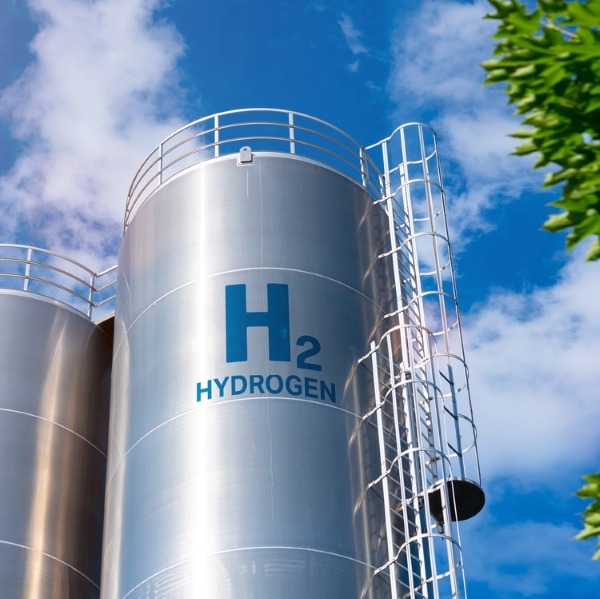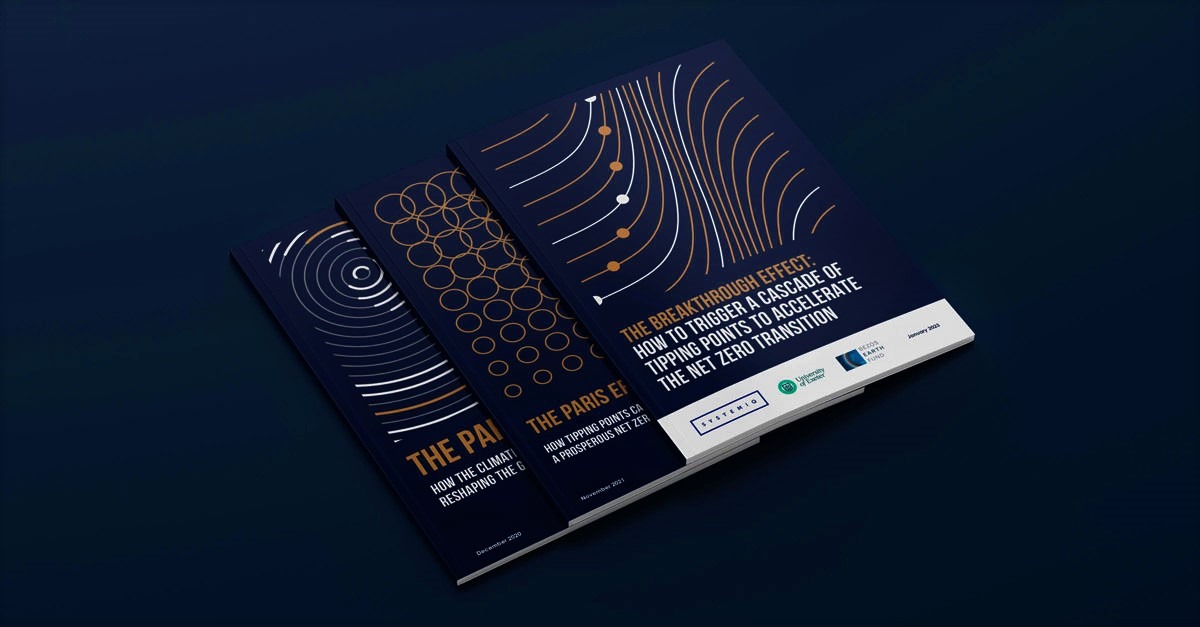Three “super-leverage points” could trigger a cascade of tipping points for zero-carbon solutions in sectors covering 70% of global greenhouse gas emissions, according to ‘The Breakthrough Effect’, a new report presented today at the World Economic Forum meeting in Davos.
With time running out to limit global warming to 1.5°C, the report – produced by an international team including Systemiq and the University of Exeter – shows how parts of the global economy could move rapidly towards zero emissions, with far-reaching effects across 10 of the highest-emitting sectors: that’s the Breakthrough Effect.
A leverage point is where a small intervention can cause a large effect. The “super-leverage points” identified in the report not only cut emissions in one key sector, but also support faster changes in other parts of the economy.
The three super-leverage points are: mandates for the sale of electric vehicles, mandates requiring “green ammonia” to be used in the manufacturing of agricultural fertilisers, and public procurement of plant-based proteins. These changes could trigger a cascade of tipping points, leading to cheaper batteries to help solar and wind scale-up in the electricity sector, cheaper hydrogen opening up decarbonisation for the shipping and steel industries, and reduced pressure for deforestation.
How do positive tipping points work?
A tipping point, in this context, happens when a zero-carbon solution advances to a point where it outcompetes the existing high-carbon solution. Once reached, self-reinforcing “feedback loops” drive exponential growth in the adoption of the new solution and a rapid decline of the old.
“High-emitting sectors of the economy do not exist in isolation – they are deeply inter-connected, and zero-emission solutions can influence transitions in multiple sectors simultaneously,” said Simon Sharpe, a lead author of the report. A tipping point has already been crossed in the electricity sector, with solar and wind accounting for more than 75% of new global capacity built in 2022.
In the Breakthrough Agenda, launched at COP26 in 2021, 45 countries – together representing 70% of global GDP – committed to work together to make clean technologies and sustainable solutions the most affordable, accessible, and attractive option in each of the high-emitting sectors before the end of this decade. This report aims to help show where these tipping points lie.
The Breakthrough Effect and the need for targeted action
The report supports the Breakthrough Agenda, the First Movers Coalition and other initiatives working to make low-carbon solutions the most affordable, accessible and attractive option in each emitting sector.
“With time running out, there is a need to be targeted,” said Mark Meldrum, Systemiq partner and a lead author of the report. “Our report spotlights key opportunities to effect change that can produce huge returns in terms of decarbonisation. It identifies positive tipping points in the highest-emitting sectors of the global economy, and analyses the conditions required to trigger them.”



What's your view of 'The Breakthrough Effect'?
‘The Breakthrough Effect: How to trigger a cascade of tipping points to accelerate the net zero transition’, developed by Systemiq in partnership with the University of Exeter and Simon Sharpe, is a contribution to Systems Change Lab with the support of Bezos Earth Fund


